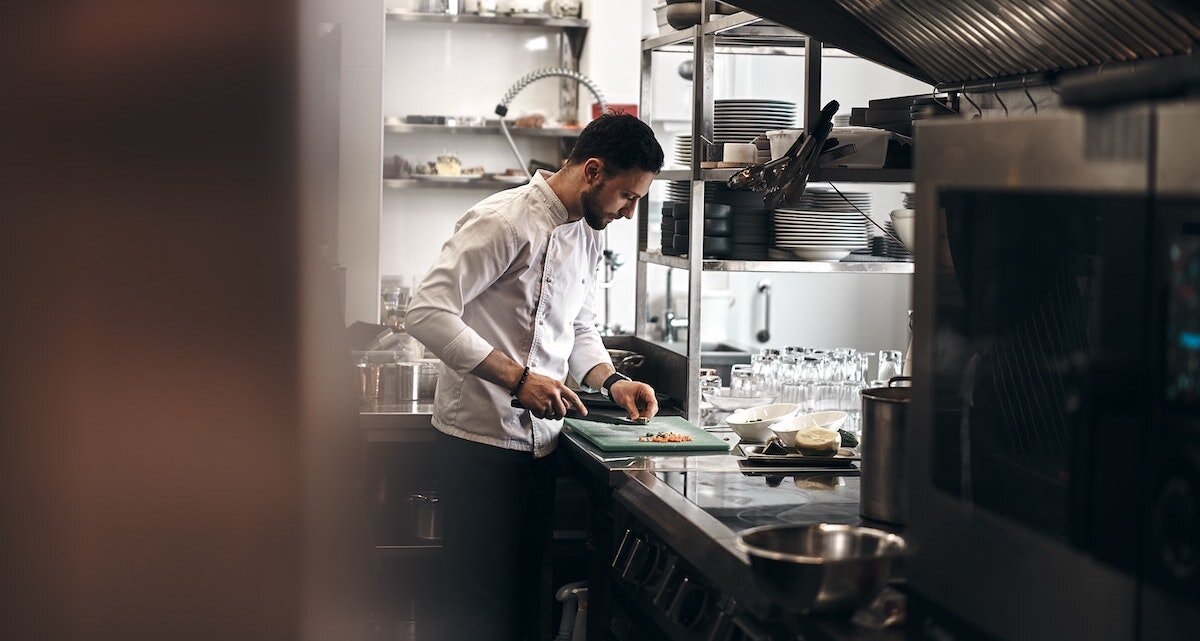Everything to Know About Ghost Kitchens
Category: Learn

The pandemic hit the restaurant industry hard and heavy, with nearly 100,000 restaurants going out of business, and almost 6 million workers losing their jobs. As Fortune reports, almost 25% of Americans stopped going out to eat entirely.
But of course, that doesn’t mean that people have stopped eating. Many restaurants have seen a great return of customers and a growing segment of consumers are ordering from restaurants that operate virtually.
A sizable group of entrepreneurs and commercial real estate investors are investing in ghost kitchens, a niche asset class predicted to nearly double in size over the next five years. In fact, one commercial news publication reports that investments in ghost kitchens are becoming as popular as triple-net-leased properties, multifamily, and industrial.
What is a Ghost Kitchen?
Ghost kitchens – also known as cloud kitchens – are used by digital-only restaurants to prepare meals ordered by consumers online and delivered via third-party apps like DoorDash and UberEATS. Instead of investing hundreds of thousands of dollars in a full-service, dine-in restaurant facility, a restaurateur can rent a ghost kitchen for less money and fewer staff.
At first glance, ghost kitchens may seem a bit odd, but some very well-known firms have used similar concepts to become multi-billion dollar companies. For example, Airbnb doesn’t own rental property but generated over $3.3 billion in 2020, and Uber doesn’t own automobiles but has a current market cap of $83.5 billion.
How – and Why – The Ghost Kitchen Market Keeps Growing
According to the National Restaurant Association, food and beverage sales totaled about $789 billion last year, an increase of nearly 20% compared to 2020. Although sales keep rising, consumers are also changing how they eat, due to the pandemic and its seemingly endless variants. Customers are looking for a safer experience, while restaurant owners face rising food and labor costs. That’s where ghost kitchens come into play.
A recent report from Hospitality Technology says the forecast for ghost kitchens is “steaming hot.” The size of the ghost kitchen global market is estimated to be $43.1 billion, and is forecast to soar to $71.4 billion over the next five years.
But even those predictions could be underestimating the true potential growth of the ghost kitchen market. Restaurant Dive reports that ghost kitchens could create a $1 trillion opportunity by 2030, potentially replacing 50% of drive-thru and takeaway restaurant business and about 30% of the ready meals and dine-in food service business.
There are several reasons why a growing number of restaurant owners are incorporating ghost kitchens into their business model or even going entirely virtual:
- Lower startup costs are involved in fitting out only a kitchen instead of an entire restaurant.
- Reduced ongoing overhead costs due to minimal furniture, fixtures, and rented space.
- Focus on maximizing to-go workflows.
- Increase market share by not being tied to a physical location.
- Better manage food costs by updating menus on a restaurant app instead of printing menus and signage.
Benefits of Investing in Ghost Kitchens
Commercial real estate investors are also seeing significant benefits from investing in ghost kitchens. For example, CloudKitchens rents turnkey ghost kitchens to restaurant entrepreneurs, while Virtual Dining Concepts helps brick-and-mortar restaurants increase profits by going digital.
If the forecast from Hospitality Technology is accurate, the ghost kitchens’ market cap will grow by nearly $30 billion in size in just a few short years. Here are some of the benefits of ghost kitchens as a commercial real estate investment:
- Initial capital investment for a ghost kitchen is around $30,000, according to CloudKitchens.
- Square footage needed for a cloud kitchen is between 200-300 square feet versus 2,000+ square feet for a full-service, dine-in restaurant concept.
- Investors can develop ghost kitchens at a lower cost and in lower-traffic locations such as Class B retail space, since business is done entirely online.
- Reduce tenant turnover by providing a way for users to operate more efficiently and profitably with less staff, lower food cost waste, more menu flexibility, and more affordable rent.
- Offer tenants the opportunity to run their entire restaurant business online with apps like UberEATS, DoorDash, and Grubhub while keeping payroll costs to a minimum.
While there are plenty of benefits to investing in ghost kitchens, there are some potential drawbacks to consider.
Although the ghost kitchen concept is projected to grow, it’s always possible that consumer habits change again. Also, because there is a lower barrier to entry to set up ghost kitchens, increased competition and oversaturation could become an investment risk in some sub-markets.
How to Invest in Ghost Kitchens
Ghost kitchens have become a new favorite for lenders and commercial real estate investors alike despite the potential risks. As GlobeSt.com recently reported, ghost kitchens are becoming a sought-after investment class, similar to industrial, multifamily, and triple-net-lease properties.
There are a variety of options for investing in ghost kitchens. Some of the most common opportunities include:
- Incubator kitchens located alongside dine-in brick-and-mortar restaurants that can specifically handle delivery orders and take away.
- Fully-equipped kitchen pods, , similar to shipping containers, that can quickly and easily be transported from one location to another.
- Commissary kitchens which provide limited food preparation and storage space for mom-and-pop restaurants or food truck owners.
- Commercial kitchens that are fully equipped and fixtured, created for single or multi-tenant use similar to the CloudKitchens concepts.
While ghost kitchens may never entirely replace dine-in restaurants, this growing commercial real estate asset class is poised to capture a large percentage of the market over the next five years. Similar to the way that Prologis and Equinix own and operate warehouses and data centers today, ghost kitchens could very well become the next hot real estate niche to invest in and derive profit.
